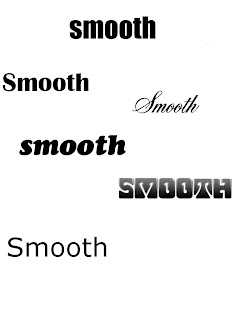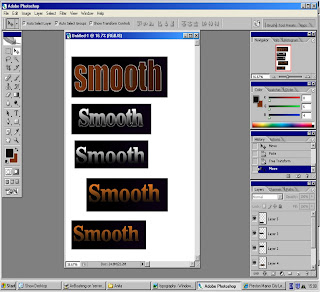In order to create the masthead, I first have to choose the typography that the name of the magazine should be in.

Here, I have created a range of fonts with the name smooth to help me decide what typography I should use for my masthead. I have decided to use the font second down to the left-hand side as I feel it connotes the word "Smooth" the best. Alongside this, I will be using the gradient effect that I used on one of the fonts to create the masthead.
FIRST MASTHEAD ATTEMPT:
Here I have tested different colours against a black background to see what colour compliments the black background but also connotes soul. In the end I decided to use the colour and effect of the 4th masthead design.
Here I am starting to finalize the masthead. I like everything that I have changed all I wants to do is swap the effect used on the puff with the masthead as I feel the masthead needs to stand out more than the puff as it is the name of the magzine.
FINAL MASTHEAD:













